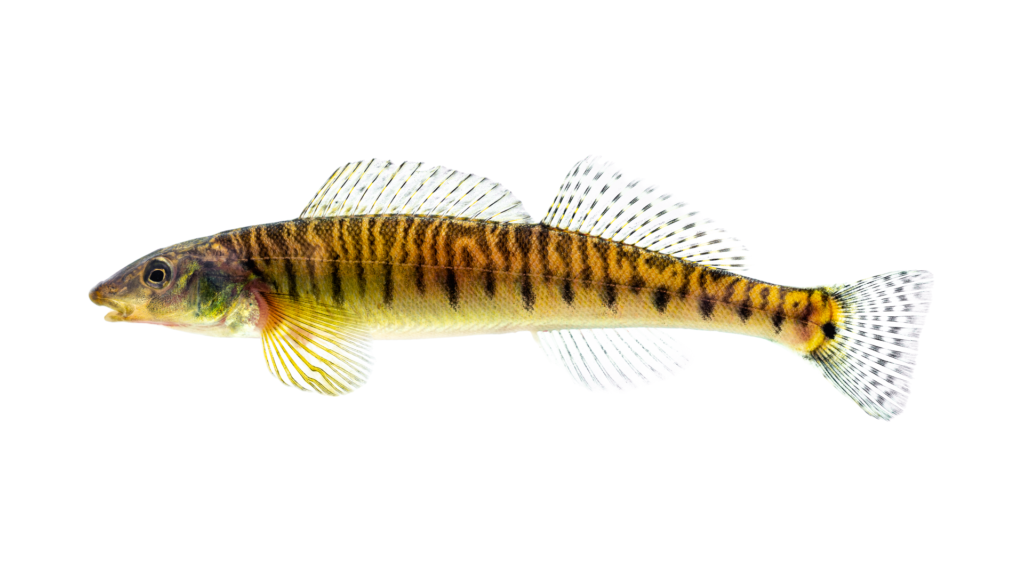Have you ever thought how many species of freshwater fish have been lost from North Carolina’s natural heritage since North Carolina was first explored by Europeans in the early 1500s and later colonized by Europeans in the 1600s?
We have written at least 13 blogs about North Carolina’s imperiled fish fauna (https://ncfishes.com/blog/), including:
- A photographic essay on North Carolina’s imperiled fish fauna Link
- Roanoke Logperch Link
- American Brook Lamprey Link
- Cape Fear Shiner Link
- Paddlefish Link
- Sicklefin Redhorse Link
Currently, there are about 260 freshwater fish species residing across North Carolina. Approximately 80 species (31% of the total fauna) are Federally or State listed as either Endangered, Threatened, Special Concern, or Significantly Rare (Tracy 2020, 2024). Our fish fauna has become imperiled for many reasons. These threats are tied for the most part back to human-related causes. Depending upon the species, these causes may include over-fishing; flow alterations (quantity, quality, and seasonality) and changing thermal regimes below large mainstem impoundments and small dams; habitat alteration and fragmentation; migration interdiction, legacy landuse modifications; urbanization and population growth; poor water quality; sedimentation and excessive turbidity; non-point source runoff; and nonindigenous (non-native) species.
The French Broad River basin, encompassing the French Broad, Mills, and Swannanoa rivers, and the cities of Asheville and Hendersonville, has the greatest number and percentage of imperiled species (27 and 27%, respectively) (Tracy et al. 2020, 2024). Unfortunately, this river basin also suffered some of the worst damage in modern history inflicted upon it by catastrophic flooding from the remnants of Hurricane Hellene in 2024. Its long-term impacts on the many imperiled species in the French Broad River and Nolichucky River basins have yet to be determined. These species include American Brook Lamprey, Lake Sturgeon, Mooneye, Stonecat, Banded Sculpin, Snubnose Darter, Sharphead Darter, and Blotchside Logperch.
Species updates of 22 of the 80 imperiled species have been organized into three categories:
- Species Extirpated From North Carolina;
- Species Extirpated from Specific Basins in Addition to Those Species Previously Listed as Being Extirpated from North Carolina; and
- Species Believed to Have Been Extirpated, But Have Been Re-introduced or Re-discovered in North Carolina (Link).
Although we cannot turn back the hands of time, we can continue going forward in restoring some species for future generations. Conservation efforts, conducted primarily by staff with the North Carolina Wildlife Resources Commission’s Aquatic Wildlife Diversity Program, with some assistance by NCWRC’s District sportfish biologists and university and private sector staff, have been assisting in the recovery of our imperiled fauna through:
- Targeted Species Specific Surveys – Carolina Madtom, Blotchside Logperch, Rustyside Sucker, Bridle Shiner, “Lake Waccamaw Broadtail” Madtom, Blackbanded Sunfish, and Snubnose Darter;
- Incidental Observations While Conducting Other Species Specific Surveys – American Shad, “Atlantic” Highfin Carpsucker, Eastern Silvery Minnow, Mountain Madtom, Banded Sculpin, Robust Redhorse, and “Carolina” Redhorse; and
- Propagation and Re-introductions – Lake Sturgeon, Robust Redhorse, Spotfin Chub, and Carolina Madtom.
I would like to thank Luke Etchison, Michael Fisk, Brena Jones, and Thomas Russ, staff with the North Carolina Wildlife Resources Commission’s Aquatic Wildlife Diversity Program, for reviewing select species updates. Their efforts should be supported by anyone who cares about conserving and restoring North Carolina’s freshwater fish diversity and its entire aquatic natural heritage.




